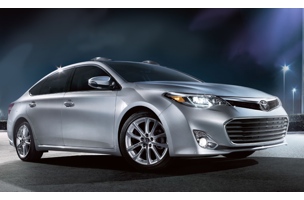Velodyne’s preliminary design concept for automotive 3D visualization, with roof-mounted next-generation LiDAR sensors
Velodyne announced yesterday that the company is set to begin high-volume manufacturing of sensors. Enabled by strong sales of the VLP-16 “Puck” LiDAR sensors, the company has invested in a production-line style manufacturing process for existing and forthcoming products, including a new automotive sensor that is currently in the preliminary design concept phase.
SPAR spoke to Wolfgang Juchmann, Velodyne’s Director of Sales & Marketing, for more information about their new production line, their forthcoming automotive sensor, and how both will help drive lower costs and better performance for all LiDAR products in Velodyne’s portfolio.
Lower Costs for All Velodyne Sensors
First, Juchmann explained that Velodyne is scaling up their production to allow the company to meet the price demands of the automotive industry.
The automotive market requires sensors that cost even less than the VLP-16, he said. “The big driver to get the cost further down, that’s the automotive industry. Obviously, if you buy a car and you have to spend $8,000 on an additional sensor, that just doesn’t work. The car industry is looking for below $1,000, even well below $500 for a sensor.”
He said that Velodyne aims to offer their forthcoming automotive LiDAR sensor at a cost “at least an order of magnitude” lower than the VLP-16.
This pricing applies to the bulk volumes at which automotive companies would buy the sensor, and not to one-off sales. However, Juchmann noted, “all the other markets can profit from it, since the costs of all sensors will go down with mass production.”
Improved Technology for All Velodyne Sensors
Juchmann emphasized that the automotive market is a priority for Velodyne. Though the company is currently developing next-generation products for the market, no details are available to the public yet. However, Juchmann was able to tell SPAR that in addition to a significantly lower price, the sensors will have a greatly improved range. They will see a jump from 100 meters to 200 meters.
“We are aiming for 200 meters for the automotive market,” Juchmann explained. This is because a car’s computer will need to see farther out than current sensors allow in order to be effective at sensing objects and avoiding a collision. “If you go on a German highway and you drive 100 mph, you need to look much farther than 100 meters to make a decision and still be able to stop in 3 seconds.”
Juchmann said the technology that allows sensors to see at a range of 200 meters will carry over easily to sensors for other markets, such as the UAV mapping market. This would allow UAV mappers to use Velodyne’s sensors at a greater height than currently possible.
In other words, the research and development performed by Velodyne for the forthcoming automotive LiDAR sensor will enable them to improve sensors for other markets, even when those markets have very different requirements for their LiDAR sensors.
The increased volume of production, when coupled with the research and development performed for the new automotive sensors, will bring one final, unexpected benefit. Velodyne will be able to produce sensors designed for the needs of each market.
“So far,” Juchmann says, “Velodyne has been making products which were generic to different markets. Now that our sensors are selling at higher volumes, we can go deeper into each vertical. In the future, we can make products that are specific to certain applications. In addition to sensors optimized for automotive applications, we see lighter and longer-range UAV sensors, lower-cost robotics sensors, and higher precision mapping sensors as possible application-specific Velodyne real-time, 3D LiDAR sensors.”






